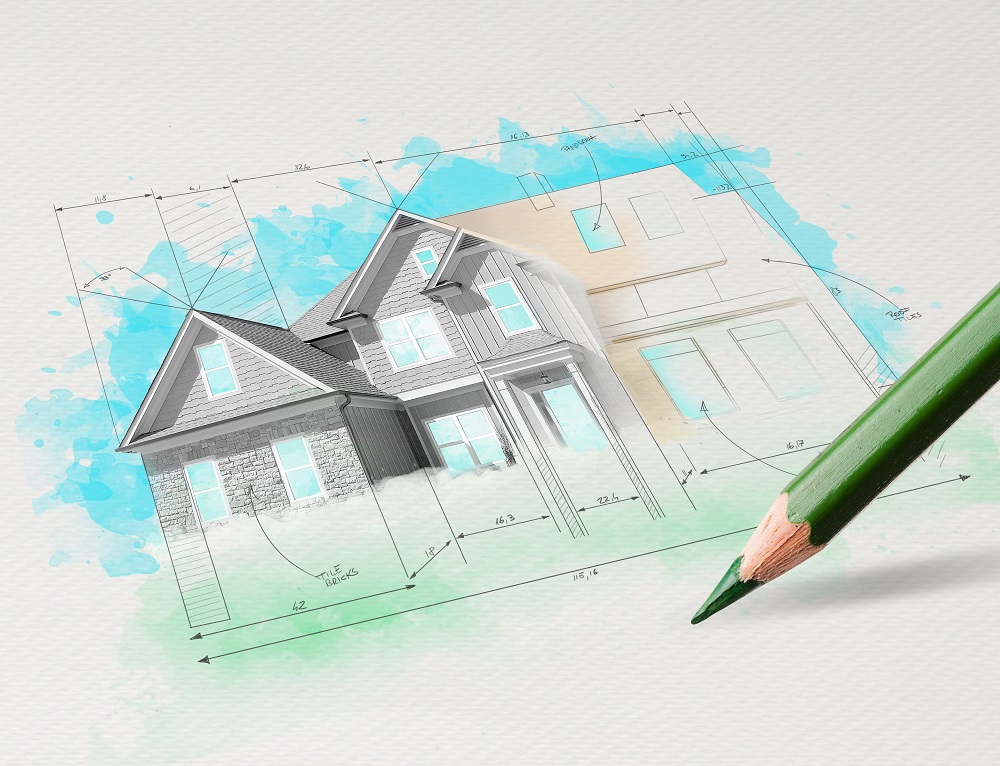Discover the art of drawing the perfect home with our expert tips and techniques. From mastering perspective to capturing intricate details, this blog post will guide you through the process of creating stunning architectural drawings. Whether you’re a beginner or an experienced artist, you’ll find valuable insights and inspiration to elevate your drawing skills and bring your dream home to life on paper.
Mastering Perspective in Architectural Drawings
Understanding the concept of perspective is a cornerstone in creating architectural drawings that resonate with realism and accuracy. This section of the article should delve into the basics of vanishing points and horizon lines, elaborating on how these elements are crucial in establishing a three-dimensional space on a two-dimensional medium. This would include a more detailed explanation of how vanishing points anchor the viewer’s eye and create a realistic sense of depth.
Types of Perspective in Architecture
Expand on the different types of perspective used in architectural drawing. A more detailed explanation of one-point perspective, suitable for structures facing the viewer, can be complemented with visual examples or sketches. Similarly, elaborate on two-point perspective, commonly used for drawing buildings at an angle, highlighting its ability to showcase multiple sides of a structure. For more dynamic and complex compositions, introduce a three-point perspective, explaining its role in capturing the height and depth of architecture, especially in cityscapes or interior designs.
Techniques for Enhancing Realism
To add depth to this section, discuss specific techniques artists can use to enhance the realism of their drawings. This could include tips on how to accurately scale elements in relation to the vanishing points, the importance of proportion in maintaining realistic perspectives, and methods to create a sense of space. Offering practical advice on how to observe and translate these elements from real-life buildings into drawings would be valuable for readers looking to improve their skills.
Bespoke House Drawing Services
At Memorialize Art, we specialize in transforming your vision of the perfect home into a stunning artistic reality. Our skilled artists excel in house drawing, capturing every unique detail and architectural beauty in exquisite, personalized artwork.
Capturing Intricate Details in Architectural Drawings
Once you have a good grasp of perspective, it’s time to focus on capturing intricate details in your architectural drawings. Choosing the right scale and proportion is crucial for accurately representing the features of a building. Pay attention to the relationships between different elements and ensure they are in harmony with each other.
Architectural drawings often involve highlighting specific features and textures, such as brickwork, roofing materials, or decorative elements. By using various line weights and shading techniques, you can add depth and dimension to your drawings, bringing them to life on the page.
Shading and lighting play a significant role in architectural drawings, as they can enhance the three-dimensional quality of the subject. Experiment with different shading techniques to create realistic effects, such as cast shadows and ambient occlusion, which can make your drawings more compelling and dynamic.
Elevating Your Drawing Skills
To elevate your drawing skills and create stunning architectural drawings, practice is key. Observational drawing, where you closely study and sketch real-life buildings, can significantly improve the accuracy and detail in your artwork. Pay attention to the proportions, angles, and details of the architecture, and strive to capture them as faithfully as possible.
Experimenting with different drawing materials, such as graphite pencils, ink pens, or markers, can also add variety and interest to your architectural drawings. Each medium has its own unique characteristics, allowing you to explore different styles and techniques to find what works best for you.
Seeking inspiration from architectural masterpieces and renowned artists can provide valuable insights and ideas for your own drawings. Visit museums, study famous buildings, and analyze the works of celebrated architectural illustrators to gain a deeper understanding of the art form and refine your own style.
Conclusion
Drawing the perfect home requires patience, practice, and a keen eye for detail. By mastering perspective, capturing intricate details, and continuously elevating your drawing skills, you can create stunning architectural drawings that memorialize the beauty and uniqueness of every home. Whether you’re creating personalized home sketches, house drawing services, or bespoke home illustrations, these techniques will help you bring your dream home to life on paper.

